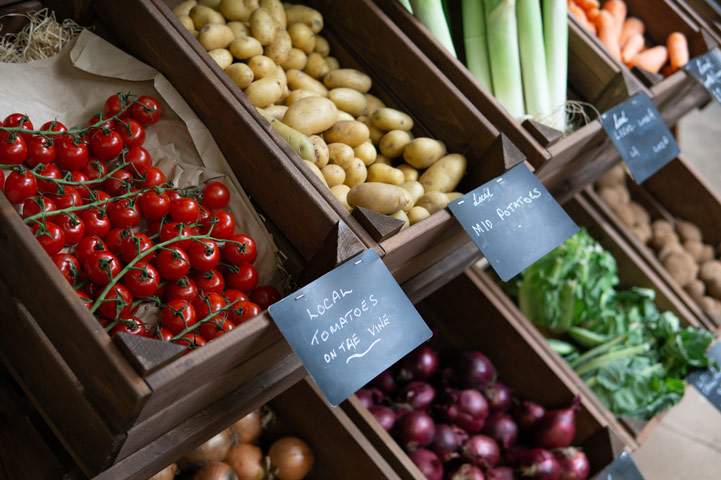We highlight how innovation builds resilience and strengthens rural businesses
Over the past few years, events have created unexpected opportunities for rural tourism and leisure enterprises. Covid-19 encouraged people to spend more time outdoors, which has benefited diversified farms and estates. The conflict in Ukraine has raised the profile of food security and British agriculture and the cost-of-living crisis has forced consumers and businesses to look for best value. As a result, there are opportunities for rural businesses around food and for those offering an experience or attraction in the countryside.
THINKING OUTSIDE THE BOX INCREASES FOOTFALL
Rural tourism and leisure businesses are increasingly positioning themselves as visitor destinations. Adding a new feature to an existing farm and estate diversification can help attract a wider customer base and increase visitor numbers. A novel attraction, event or experience that complements the existing business can improve customer loyalty and increase repeat custom. The existing diversification will benefit further if these new ideas tap into the high-level consumer trends that have developed over the past few years: sustainable living, wellness and experiences.
There are many reasons why diversified rural tourism and leisure businesses look to strengthen and expand, but most decisions relate to increasing profit to ensure success over the long term. For some, the desire to expand relates to succession and family members returning to the farm or estate, often with new ideas. Diversifying the diversification can also mitigate risk.
Ultimately, it will depend on the type of business, its location and target market, but expansion can be achieved in a variety of ways. Our research highlights ten ideas for expanding and adding value to rural businesses. We discuss how to add features to the existing enterprise and highlight opportunities to promote and improve access to the business through new routes to market.

CREATING A VISITOR DESTINATION
- Collaborate with local businesses to widen the scope of an attraction. For example, milkshakes via a vending machine could encourage repeat visits to a farm shop.
- Create a seasonal attraction and experience. Such as pick-your-own pumpkins, guided walks, wildflower meadow visits, Christmas trees and wreath-making.
- Develop an additional feature. Offering areas for people to walk their dogs, picnic and play free of charge can increase footfall to the main attraction.
- Offer an experience. This taps into the popularity of experiences over possessions. Ideas include providing an experience through a play area, crazy golf, guided nature walks or cookery lessons.
- Create a story around the farm or estate’s cultural heritage and history. This can be extremely powerful in creating further interest and can help develop brand and business loyalty, too.
- Add a point of difference. Quirky accommodation and a unique or unusual activity, service or product can improve competitive advantage.
ROUTES TO MARKET - Consider alternative places to market the product or service. Broadening the product or service outlets can increase exposure. Consider attending festivals and other events to extend your reach.
- Develop a digital presence. Online retailing presents opportunities for the business to learn more about their customers and improve communication.
- Create a delivery service. If appropriate, offering a delivery service can introduce new customers to the business and widen its reach.
- Tailor opening hours. Break away from traditional opening hours to create a wider customer base and even reduce costs.
There are many considerations when creating and expanding a rural diversification. Its success depends crucially on the time that is spent researching, planning and evaluating opportunities for the diversification. The location and landscape of the business, together with its assets, potential target market, planning regulations, available staff and cost of insurance will all have an impact on the decision.
POINTS TO CONSIDER WHEN EXPANDING
- Are there assets that can bring further opportunities? Redundant buildings, lakes, rivers, woodland, fields, heritage, footpaths.
- Does the expansion meet the business’ vision and goals? Experience days, accommodation, storage, or collaborating with local businesses.
- Target market. Who are the customers, and where do they live?
- Competitor analysis. To establish what competitors exist and what they are doing.
- How to position the product or service. What is the unique selling point? This can be ascertained from the competition and target market analysis.
- Managing more visitors. Does the business have the skills to deal with the public?
- Planning. Does the project need planning permission, and how will it fit with local plans e.g. nature protection?
- Funding and grants. How will the project be financed? Are there any grants or private finance opportunities available?
- Tax implications. Diversification could have positive or negative tax implications, so consider all perspectives.
- Health and safety. It is important to understand the health and safety requirements of any expansion.
- Legal. It is recommended to seek legal advice, particularly if the business status is changing due to the expansion.
- Succession planning. Does diversification offer the opportunity for younger members of the family to come into the business?
- Infrastructure. Is the expansion accessible by all? What is required if not? Can the expansion include renewable energy opportunities to build resilience in energy provision for the future?
- Finance. Seek professional advice to develop forecast profit and loss accounts and look at budgeting against these as the diversification develops.
- Marketing. What format does the marketing material need to be in, and how often should it be promoted?
- Insurance. It is important to make sure the business has the correct insurance. When looking at the overall strategy, risks will need to be assessed and a view on how the business will mitigate them.
- Rating. Does the new enterprise or change in use of any buildings have implications for business rates?
FOCUS ON FARM SHOPS
To demonstrate how rural tourism and leisure businesses are adjusting to meet the changing expectations of customers, improve returns and strengthen the core business, Savills Rural Research undertook a desktop study focusing on 50 farm shops of all sizes across the UK. Our research reviewed and categorised the activities and attractions offered by these farm shops using websites and open-source data.
Analysis of the 50 farm shops indicates that many are expanding their offer by adding further activities and attractions (figure 4).
Not only does this encourage repeat visits, longer stays, and ultimately increase income, new ideas and activities may also attract a wider and new customer base. Figure 5 highlights the most popular recurring features.
- All of the farm shops analysed had additional activities and attractions.
- A broad range of features were offered across all sizes of farm shop, from weekend opening, cafés, online, pick-your-own to play areas and vending machines.
- Of all the farm shops analysed, the average number of features offered was 7, with 12 being the most offered by a larger farm shop.
Read the articles within Spotlight: Rural Tourism and Leisure below.
.jpg)
